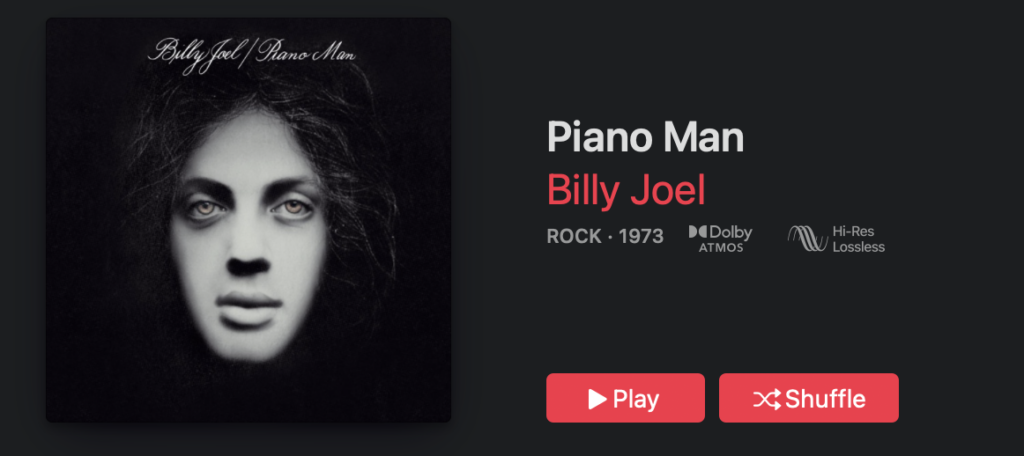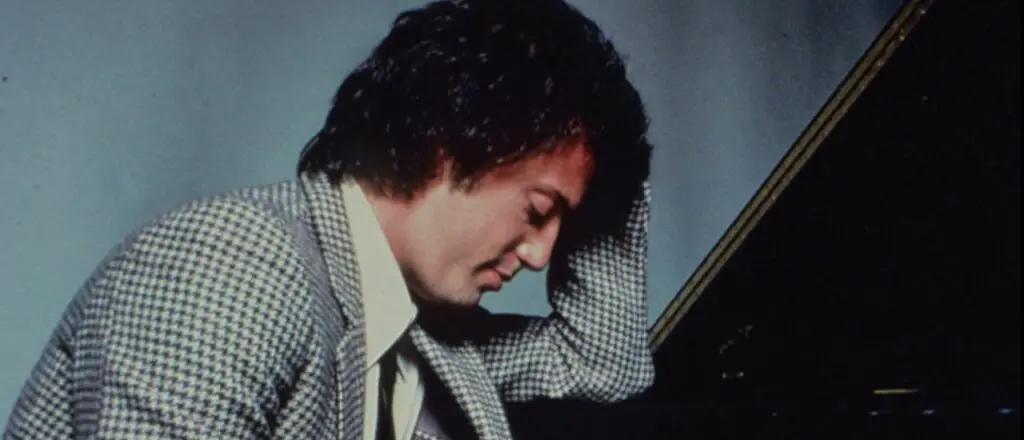Piano Man was singer-songwriter Billy Joel’s second studio album, released through Columbia Records and Artie Ripp’s Family Productions label in 1973. The album would ultimately prove to be the first of several breakthroughs for Joel, as the title track–still considered his signature song–peaked at #25 on the Billboard top-40 chart.
Originally hailing from Long Island in New York, Joel had released his debut album Cold Spring Harbor just two years prior to little airplay or commercial success. Early LP pressings of that album were famously marred by a speed error, unnaturally pitching up his vocals. Joel would of course be catapulted into international fame on the back of 1977’s The Stranger–the first of a very successful string of collaborations with producer Phil Ramone–and continue to dominate the album charts throughout the 1980s.
Fans who came on board in the '80s would be reintroduced to his pre-The Stranger catalog through 1981's Songs From The Attic, a live album composed entirely of lesser-known songs from his first four records like "She's Got A Way," "You're My Home," "Los Angelenos," and "Say Goodbye To Hollywood."
In celebration of its 50th anniversary, a new Dolby Atmos mix of Piano Man has just become available on the streaming services. The Atmos mix was created by Bradshaw Leigh and mastered by Adam Grover at Sterling Sound. Leigh and Grover previously worked on new Atmos mixes of Joel’s The Nylon Curtain (1982) and An Innocent Man (1983).

As some longtime immersive music fans may recall, a quadraphonic mix of Piano Man was issued on SQ-encoded LP and four-channel 8-track tape in 1974. The quad version of the album–credited to Don Young and Harold J. Kleiner–eschews the grandiose reverb-laden production of songs like “Captain Jack” and “The Ballad Of Billy The Kid” in favor of a much drier, more intimate live-in-the-studio feel. Individual musicians’ contributions are largely pinned to opposite corners of the room, with main elements like lead guitar, piano, and even drums frequently appearing in the rear speakers.
For me, Leigh’s new Atmos mix strikes a nice balance between remaining faithful to the original stereo production while also paying homage to the adventurous nature of the quadraphonic version and dropping the listener right in the center of the performance.
The opening track “Travelin’ Prayer” keeps the rhythm section and lead vocal upfront, while the harpsichord-like electric guitar and banjo(?) duel each other in the side speakers. The new Atmos mix makes little use of the center channel, instead opting for a more traditional phantom center front treatment for Billy Joel’s vocals. I did feel there was a bit of a missed opportunity at the end to try some playful panning with the ‘bouncy’ sound effect towards the end.
The spread of instruments in the title track actually isn’t all that different from the ‘70s quad mix, aside from the drums again being relocated to the front stage. Accordion pops up in side left and concertina in side right, nicely complimenting Joel’s soaring vocal and harmonica upfront. The big reverbs from the original mix are back, mostly panned to the height speakers and yielding a remarkable sense of space to the proceedings.

One of my biggest issues with the ‘70s quad mix is the nearly-inaudible lead vocal in “You’re My Home,” which has thankfully been restored to its intended level in the new Atmos mix. The opening acoustic guitar largely takes up residence in the side right channel, while an electric part pops up mostly in the front left height speaker midway through (“home can be the Pennsylvania turnpike…”).
“Billy The Kid” again somewhat mirrors the quad presentation by keeping the main band upfront and using the additional channels primarily for the orchestra. Whereas the quad separated out the acoustic and electric guitar parts during the verses (“it started with a bank in colorado…”), those elements are now kept upfront with the rhythm section at much lower volume. Additionally, Billy’s harmonica has been relocated from the right rear speaker to center front.
The center channel suddenly comes into play during “Worse Comes To Worst,” supplying an isolated keyboard part while the fuzz guitar pops out of side left and bongos rain down from the right height channels. The Atmos mix notably restores the original piano solo in this song, whereas the quad used an alternate take played on keyboard instead.
“Stop In Nevada” supplies a steady diet of strings and backing vocals in the side and rear channel, while–as with “Billy The Kid”–the grandiosity of “Captain Jack” translates nicely to the immersive format. The big reverbs extend upwards into the clouds, with the organ coming in from all around during the chorus.

Though I wouldn't call it a poor-sounding record by any means, Piano Man’s sonics pale in comparison to subsequent Billy Joel records produced by Phil Ramone. The new Atmos mix is undoubtedly the clearest I’ve heard this material, but there are still some moments of harshness (such as the harmonica in the title track) and a generally ‘mushy’ quality to some of the louder passages.
Having recently had the opportunity to hear several selections from the album played back from the lossless ADM masters in a professional studio environment, I can’t help but notice that extra bit of missing detail and often ‘tinny’ quality to the ambience in the lossy streaming incarnation. As such, I’m hopeful the Atmos mix–along with the rare quadraphonic version–will eventually receive a hi-res release either in physical disc or digital download form. Until then, it’s absolutely worth checking out for fans of Billy Joel and immersive music.

